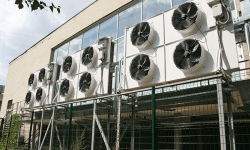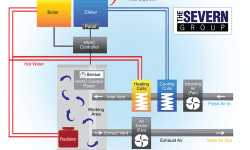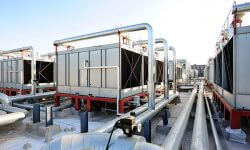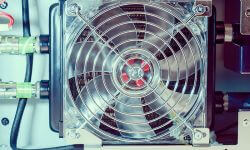A safe, comfortable work environment is important for employee satisfaction. Considering this, you wouldn’t want employees to use broken equipment or have to sit under a leaky ceiling. And, the same goes for air quality. If your office has poor indoor air quality (IAQ), the employees’ health, productivity and overall comfort will be affected. Here are five things you can do to improve indoor air quality in your office building.
Read more →For your commercial HVAC system to run at peak efficiency, it needs to be sized just right for your facility. If not, you could face issues, like higher energy bills or temperature fluctuations. Here’s why HVAC system size impacts efficiency and what goes into calculating the size of your HVAC unit.
Read more →Direct Digital Control Technology is the control of a building’s conditions through a digital device, typically a computer. It is a system that is commonly aligned with Building Automation Systems. And, it is mainly used in commercial HVAC control and energy management system applications. In a commercial building, Building Automation Systems (BAS) and Direct Digital Control Technology (DDC) work together to provide programmable and precise control of the building’s functions.
Read more →The term BAS stands for Building Automation Systems. Such a system is installed in a high-performance building during construction. A BAS system allows the building to be more energy efficient. The system will also be used to monitor the structure and ensure all components are working properly. Building Automation Systems also provide data which can be used to show how high-performance buildings work. This helps to see financing offered to companies that want to construct such facilities.
Read more →There is currently a resurgence in the building industry as companies are moving back into the cities, and building codes are becoming more energy efficient driven. Developers are following these codes that encourage less energy use but create more renewable energy on-site.
Read more →When it comes to designing HVAC systems, many manufacturers are switching to energy efficient models and design methods. In fact, many factors go in to designing an efficient HVAC system, and this article will focus on those elements. Read carefully and take into consideration these tips on the fundamentals of efficient HVAC design. Upon reading, you will gain more insight into designing an HVAC system, as well as understand what to look for when purchasing a new HVAC system.
Read more →The term HVAC stands for heating, ventilation and air conditioning, a system used to control the temperature in a space as well as humidity and quality of air. In a big building, the system needs to be able to function based on comfort need as well as meet the size of the space. The HVAC system must transfer heat and moisture into and out of the air to control the temperature level, as well as the level of air pollutants. This is done by removing the pollutants directly or by diluting them.
Read more →The heating, ventilation and air conditioning system is one part of your building that when it works, you take it for granted. In the same vein, if it’s defective, you will really feel every minute that you are inside the four-walled structure. Installing this system in a new building is complicated enough, but retrofitting HVAC for historic buildings is a whole other level altogether. We have compiled a list of guidelines to retrofit HVAC for historic buildings.
Read more →Air-Cooled Chillers vs. Water-Cooled Chillers When researching commercial HVAC systems for your facility, you have a lot of requirements to consider. chillers, like facilities, come in various sizes, shapes, and capabilities. Commonly we get the questions, which chiller is better, air-cooled chillers or water-cooled? Which system is the
Read more →Want to learn more about increasing your building’s energy efficiency, thus improving overall sustainability? Here is helpful information regarding how you can save money with VRF cooling system integration.
Read more →









